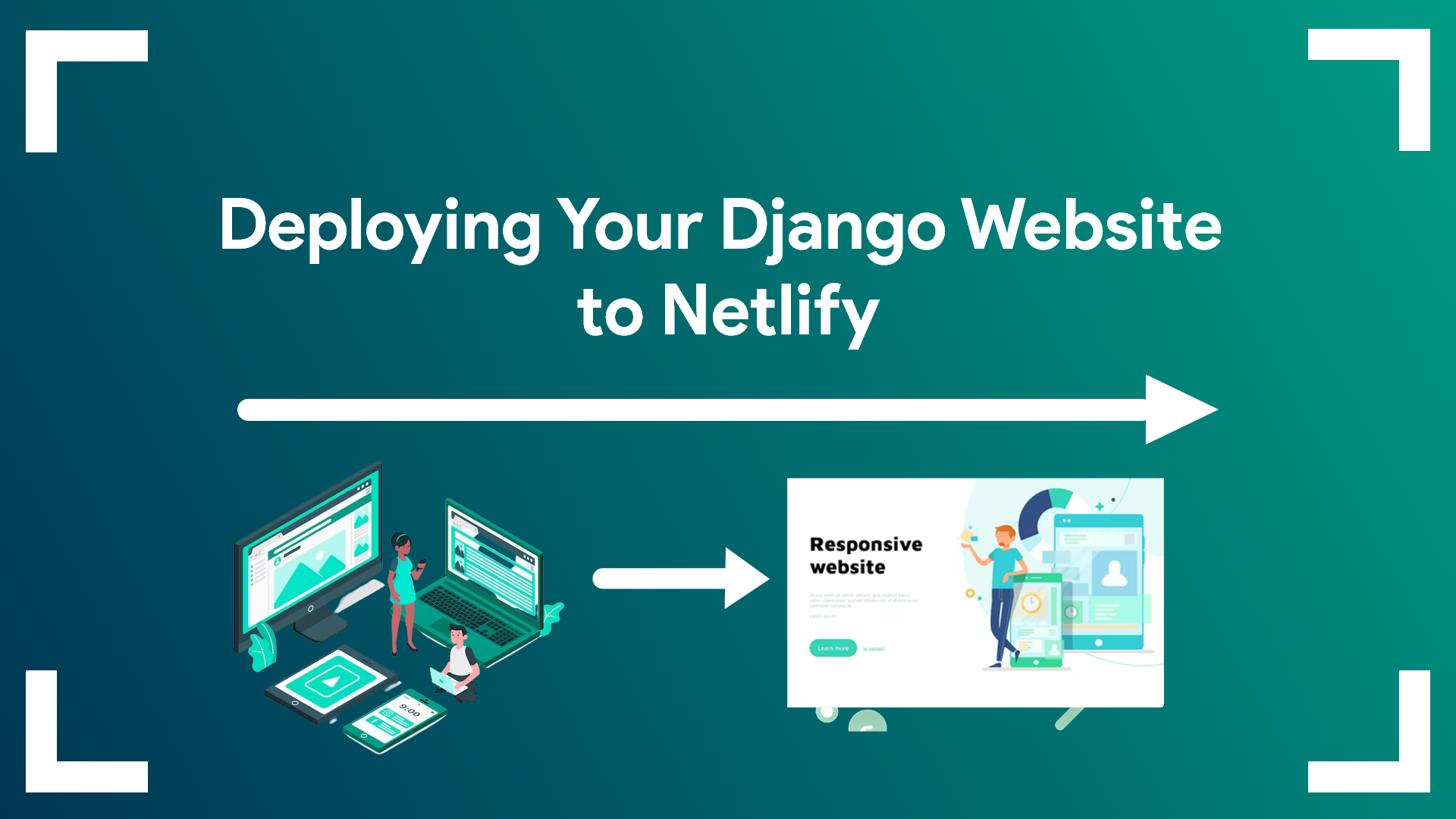How to Deploy Your Django Website to Netlify: A Step-by-Step Guide
Introduction
Netlify is a popular cloud hosting platform known for its user-friendly interface and support for various programming languages. While Netlify primarily focuses on hosting static sites, there is no straightforward method to deploy a Django web app directly on the platform. However, in this guide, we will explore an alternative approach using a static site generator called Cactus to deploy a simplified version of your Django app on Netlify.
Now, We will learn about setting up cactus and how to deploy your Django website to netlify. Let’s start :
Setting Up Cactus:
- Start by creating a virtual environment:
Replacemkvirtualenv <env><env>with the desired name for your environment. - Install Cactus:
pip install Cactus - Create a folder to host your files:
Replacemkdir <dir><dir>with the desired name for your directory. - Generate a new site:
Replacecd <dir> cactus create <app><app>with your preferred app name. - Access your app:
cd <app> - Serve your site:
Your site should now be accessible at http://localhost:8000. Ensure there are no errors displayed in your command prompt.cactus serve
Preparing Your Static Site:
Once your site is running, it’s important to configure your static and HTML files correctly. Here are a few concepts to consider:
Templates & Pages: Cactus has a different file structure compared to Django. The Templates folder hosts the base.html file, while other HTML files such as index.html and about.html are placed in the pages folder. Despite the structural differences, the principles of templating and using Jinja remain the same.
.build Directory: You will notice a directory named `.build` in your project structure. This directory contains all the HTML files (excluding base.html), the static folder, and other files like the sitemap. The `.build` directory is crucial for rendering your site locally.
Build & Serve: Building and serving your site in Cactus is similar to running `python manage.py runserver` in Django. The build command generates your site in the `.build` directory, while the serve command allows you to preview your site in the browser.
To build your site:
cactus buildTo serve your site:
cactus serveYour site will be accessible at http://localhost:8000, just like with Django.
Deployment Process:
Before deploying to Netlify, it’s important to secure your site and hide sensitive files. Create a .gitignore file in the project’s root directory and add the .build directory to prevent public access.
Next, create a `requirements.txt` file to specify the dependencies required to run your app:
pip freeze > requirements.txtBefore deploying, ensure your Django project is ready for production:
- Confirm that your project is using Django 2.0 or higher, as Netlify requires a compatible version.
- Double-check your project’s configuration settings, such as
`ALLOWED_HOSTS`, and ensure all dependencies are properly listed in your`requirements.txt`file.
To deploy your site to GitHub:
Netlify supports continuous deployment through GitHub repositories. Then ,
- If you haven’t already, Create a new repository on GitHub for your Django project without selecting the
`.gitignore`and README options. - Follow the prompts provided by GitHub to add your site to the repository.
Set Up Environment Variables
Netlify lets you set environment variables easily. For sensitive information like database credentials, use Netlify’s environment variable settings to ensure security.
Configure the Build Settings
Netlify requires specific build commands to deploy Django projects:
- In your repository, create a
`netlify.toml`file. - Configure the build command and output directory:
[build]
command = "python manage.py collectstatic --noinput" publish = "path/to/your/static/files"
Install Netlify CLI
Install the Netlify Command Line Interface (CLI) to manage your deployments locally. Run:
npm install -g netlify-cliDeploying to Netlify:
- Sign up for a Netlify account.
- On the “Your Sites” page, click on “Import from Git.”
- Connect your GitHub account to Netlify.
- Configure your Netlify settings on GitHub and select the repository you created.
- Scroll down to “Basic build settings” and provide the branch, directory, and build command.
- Click on “Deploy site” and wait for the deployment process to complete.
If you encounter an error during deployment, check the build logs for the Python version. If it’s not a recent version supported by Netlify, you can set the Python version in the site settings under “Environment variables.”
Configure Custom Domain
If you have a custom domain, configure it in Netlify’s settings. Add the domain to your `ALLOWED_HOSTS` in the Django project settings. And, Host your django app on netlify with custom domain.
HTTPS and SSL
Netlify automatically provides HTTPS and SSL certificates for custom domains, enhancing your project’s security.
Continuous Deployment
Netlify excels at continuous deployment. Any subsequent pushes to the linked GitHub repository trigger automatic builds and deployments, ensuring your Django project is always up to date.
Final Touches:
After your site is deployed, you can customize its domain name. In the site settings, click on “Change site name” and update it accordingly.
Conclusion:
While Netlify is not designed for hosting dynamic Django apps, it excels in hosting static sites. By using a static site generator like Cactus, you can deploy a simplified version of your Django app on Netlify. Although the process may differ from deploying on dedicated Django hosting platforms like Heroku, this guide provides a workaround for hosting your Django-based static site on Netlify. Now, you know how to deploy your Django website to netlify. Deploying a Django project on Netlify might not be the first option that comes to mind, but its simplicity and continuous deployment capabilities can be a game-changer. By following this guide, you can successfully deploy your Django project on Netlify, taking advantage of its hosting prowess and streamlining your deployment workflow.
Please note that for more complex Django applications with server-side processing and database interactions, it’s recommended to use specialized hosting platforms like Heroku, PythonAnywhere, AWS, or DigitalOcean.
Also Read : How to Read Strings From a .env File With Python
